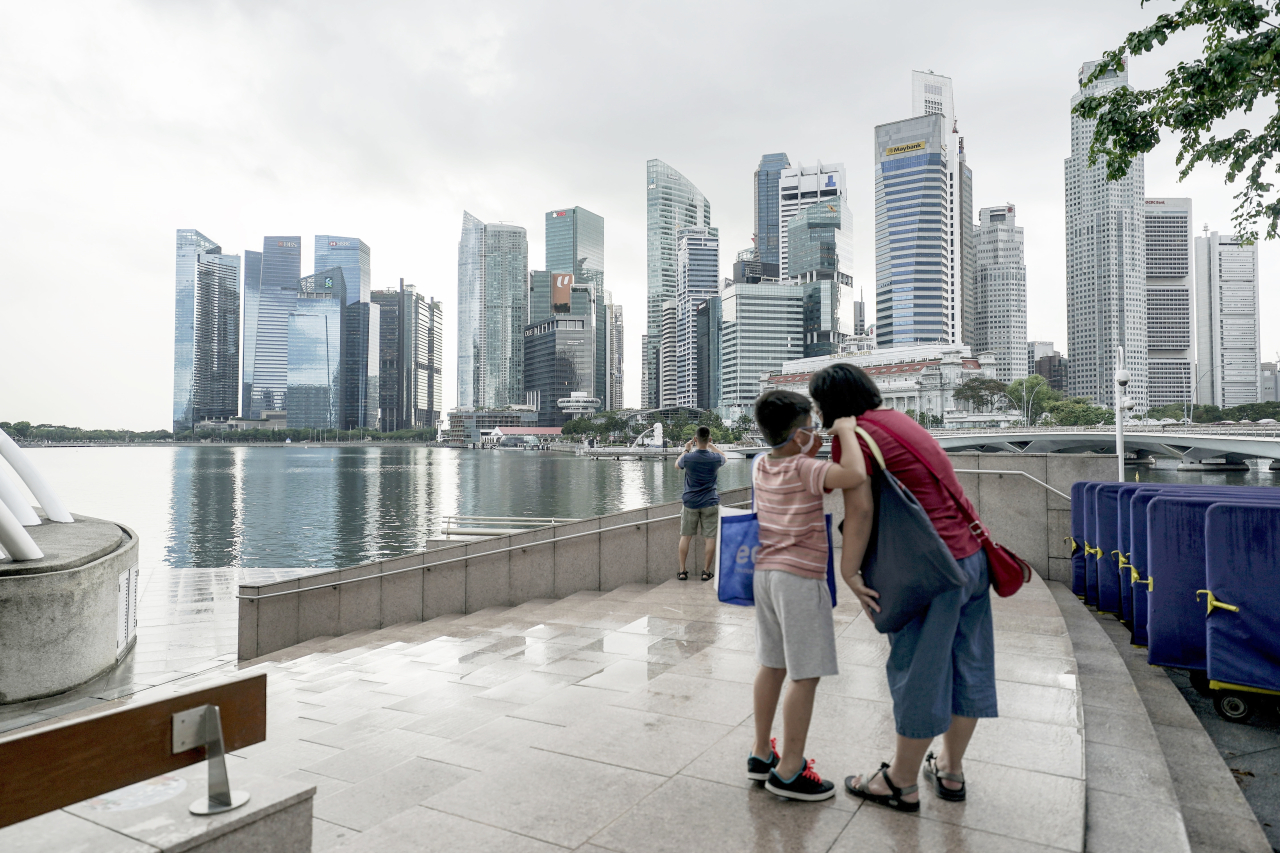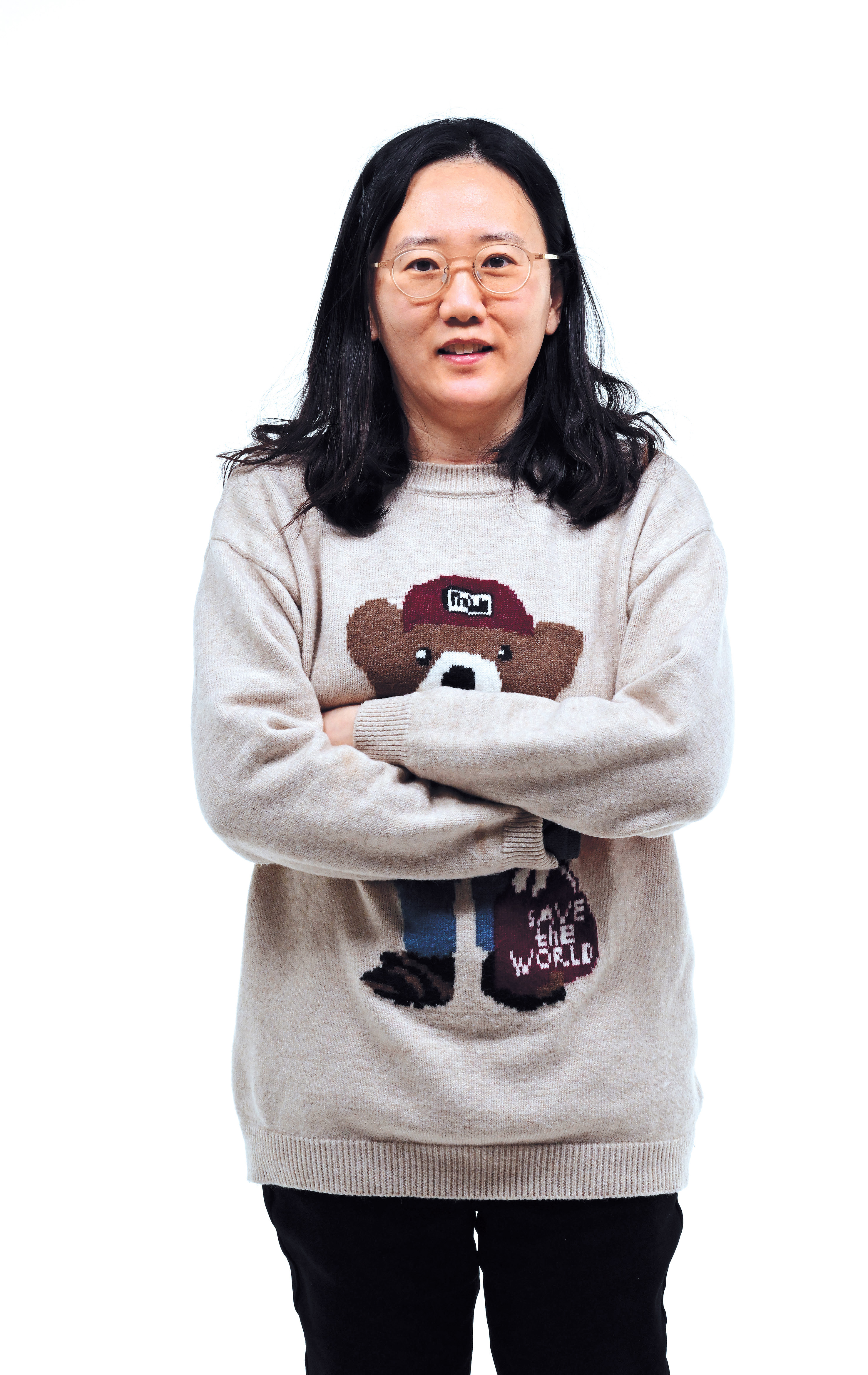[Women in Finance 5] Singapore sees more women in senior management
Government campaign to raise female representation sees progress, but more to be done
By Kim So-hyunPublished : Dec. 20, 2020 - 13:55

The Korea Herald is publishing a series of special reports on the glass ceiling in the financial industry, focusing on South Korea’s market compared to other major economies. Funded by The Korea Press Foundation, the series will evaluate where Asia’s fourth-largest economy stands in terms of gender equality, reflect on changes being made, and explore ways to boost inclusion in the sector. -- Ed.
SINGAPORE -- At Singapore’s three major local banks, women account for more than 60 percent of the total workforce.
Women make up 40 percent of senior management, which includes senior vice presidents to managing directors, at DBS and OCBC, and 35 percent at UOB.
As for the banks’ top management committees, female representation stands at about one-third at DBS, 24 percent at UOB and OCBC.
According to Fiona Chang (not her real name) who works at DBS, the number of women in senior positions has noticeably increased over the past few years.
“A majority of the female management who could have been with the bank for 30 years are from the retail banking side. There are younger female management in the private banking and trading divisions,” said Chang, a mother of two who previously worked at an American investment bank in Hong Kong.
“But when it comes to flexibility like working from home, I still find the management is not so supportive, compared to foreign banks. Also, I feel the culture differs between Singapore and Hong Kong, which is more diversified and open.”
As for OCBC, almost all of its staff are already working in the office despite the government’s call to keep as many people at home as possible due to COVID-19.
To mothers like Kim Min (not her real name) who works at a global reinsurance company, however, Singapore offers a more flexible working environment than Seoul.
“Compared to when I worked in Korea for the same company years ago, the working environment here is more understanding about coming to work late or going home early when my kids are sick or have school events,” said Kim whose colleagues are from multiple countries.
“It may be because there are more women working here, and in my company’s case, many in the senior management are Westerners who seem to be more supportive when it comes to family matters.”
The fact that many workers in Singapore choose to shift jobs every two to three years for higher pay also seems to make the company more accommodating to the employees’ needs, she added.
Ariel Moon (not her real name), who works at an American bank, also feels more comfortable with the corporate culture here, which is strictly focused on performance and less controlling.
“In Korea, I could go home only after finishing my work. But here, my boss tells me to go home and do it tomorrow. It is also easier to approach and discuss things with my boss here perhaps because I call her by her first name,” Lee said.
“No one cares about how much sick leave you use, but you get lower pay or get kicked out to another department if your performance is low. You’re given the autonomy and you take responsibility for what you do.”
Under Singaporean law, working parents of its citizens are entitled to six days of paid child care leave per year. Parents of non-citizens can get two days of child care leave a year.
In addition to providing subsidized child care, tax rebates such as working mother’s child care relief and a reduced levy for domestic helpers that help women retain their careers, the Singapore government has led a campaign to raise female representation in corporate boardrooms since 2014.
The Council for Board Diversity, established by the Ministry of Social and Family Development, has engaged companies on the appointment of women onto boards, and it has seen progress.
The proportion of women on the boards of the island state’s top 100 listed companies doubled in the four years from 2014 to 15 percent by the end of 2018, and inched up to 16.2 percent by the end of last year.
The council said it seeks to raise public awareness of the importance of board diversity through having women directors, and works with partners to “develop the pipeline of board-ready women,” based on a belief that “diverse boards are catalysts to robust governance and better stewardship of organizations.”
Nongovernmental groups such as the Financial Women’s Association of Singapore also help empower women by helping them identify their career ambitions and supporting them through the ranks.
“In Singapore, there is expectation that women will work, so by implementing policies that help women collectively, (the government makes) women feel supported. Employers also see that their female employees have that support, and they can therefore be more certain that they will continue to work should they choose to have a family too,” said FWA president Jacqueline Chua.
“Whilst we do have a good representation of women in senior positions, there is definitely more to be done. Regardless of rank or seniority, women struggle with very personal issues such as imposter syndrome, low self-esteem and feelings of inadequateness which can really impact their abilities to push themselves forward in their careers.”
Organizations like FWA are working hard to support women here with initiatives such as mentoring programs, mutual collaboration and workshops designed to tackle these challenges head on, according to Chua.
By Kim So-hyun (sophie@heraldcorp.com)
Korea Herald correspondent
SINGAPORE -- At Singapore’s three major local banks, women account for more than 60 percent of the total workforce.
Women make up 40 percent of senior management, which includes senior vice presidents to managing directors, at DBS and OCBC, and 35 percent at UOB.
As for the banks’ top management committees, female representation stands at about one-third at DBS, 24 percent at UOB and OCBC.
According to Fiona Chang (not her real name) who works at DBS, the number of women in senior positions has noticeably increased over the past few years.
“A majority of the female management who could have been with the bank for 30 years are from the retail banking side. There are younger female management in the private banking and trading divisions,” said Chang, a mother of two who previously worked at an American investment bank in Hong Kong.
“But when it comes to flexibility like working from home, I still find the management is not so supportive, compared to foreign banks. Also, I feel the culture differs between Singapore and Hong Kong, which is more diversified and open.”
As for OCBC, almost all of its staff are already working in the office despite the government’s call to keep as many people at home as possible due to COVID-19.
To mothers like Kim Min (not her real name) who works at a global reinsurance company, however, Singapore offers a more flexible working environment than Seoul.
“Compared to when I worked in Korea for the same company years ago, the working environment here is more understanding about coming to work late or going home early when my kids are sick or have school events,” said Kim whose colleagues are from multiple countries.
“It may be because there are more women working here, and in my company’s case, many in the senior management are Westerners who seem to be more supportive when it comes to family matters.”
The fact that many workers in Singapore choose to shift jobs every two to three years for higher pay also seems to make the company more accommodating to the employees’ needs, she added.
Ariel Moon (not her real name), who works at an American bank, also feels more comfortable with the corporate culture here, which is strictly focused on performance and less controlling.
“In Korea, I could go home only after finishing my work. But here, my boss tells me to go home and do it tomorrow. It is also easier to approach and discuss things with my boss here perhaps because I call her by her first name,” Lee said.
“No one cares about how much sick leave you use, but you get lower pay or get kicked out to another department if your performance is low. You’re given the autonomy and you take responsibility for what you do.”
Under Singaporean law, working parents of its citizens are entitled to six days of paid child care leave per year. Parents of non-citizens can get two days of child care leave a year.
In addition to providing subsidized child care, tax rebates such as working mother’s child care relief and a reduced levy for domestic helpers that help women retain their careers, the Singapore government has led a campaign to raise female representation in corporate boardrooms since 2014.
The Council for Board Diversity, established by the Ministry of Social and Family Development, has engaged companies on the appointment of women onto boards, and it has seen progress.
The proportion of women on the boards of the island state’s top 100 listed companies doubled in the four years from 2014 to 15 percent by the end of 2018, and inched up to 16.2 percent by the end of last year.
The council said it seeks to raise public awareness of the importance of board diversity through having women directors, and works with partners to “develop the pipeline of board-ready women,” based on a belief that “diverse boards are catalysts to robust governance and better stewardship of organizations.”
Nongovernmental groups such as the Financial Women’s Association of Singapore also help empower women by helping them identify their career ambitions and supporting them through the ranks.
“In Singapore, there is expectation that women will work, so by implementing policies that help women collectively, (the government makes) women feel supported. Employers also see that their female employees have that support, and they can therefore be more certain that they will continue to work should they choose to have a family too,” said FWA president Jacqueline Chua.
“Whilst we do have a good representation of women in senior positions, there is definitely more to be done. Regardless of rank or seniority, women struggle with very personal issues such as imposter syndrome, low self-esteem and feelings of inadequateness which can really impact their abilities to push themselves forward in their careers.”
Organizations like FWA are working hard to support women here with initiatives such as mentoring programs, mutual collaboration and workshops designed to tackle these challenges head on, according to Chua.
By Kim So-hyun (sophie@heraldcorp.com)
Korea Herald correspondent


![[Exclusive] Korean military set to ban iPhones over 'security' concerns](http://res.heraldm.com/phpwas/restmb_idxmake.php?idx=644&simg=/content/image/2024/04/23/20240423050599_0.jpg&u=20240423183955)
![[AtoZ into Korean mind] Humor in Korea: Navigating the line between what's funny and not](http://res.heraldm.com/phpwas/restmb_idxmake.php?idx=644&simg=/content/image/2024/04/22/20240422050642_0.jpg&u=)



![[Graphic News] 77% of young Koreans still financially dependent](http://res.heraldm.com/phpwas/restmb_idxmake.php?idx=644&simg=/content/image/2024/04/22/20240422050762_0.gif&u=)







![[Exclusive] Korean military to ban iPhones over security issues](http://res.heraldm.com/phpwas/restmb_idxmake.php?idx=652&simg=/content/image/2024/04/23/20240423050599_0.jpg&u=20240423183955)



![[Today’s K-pop] Ateez confirms US tour details](http://res.heraldm.com/phpwas/restmb_idxmake.php?idx=642&simg=/content/image/2024/04/23/20240423050700_0.jpg&u=)